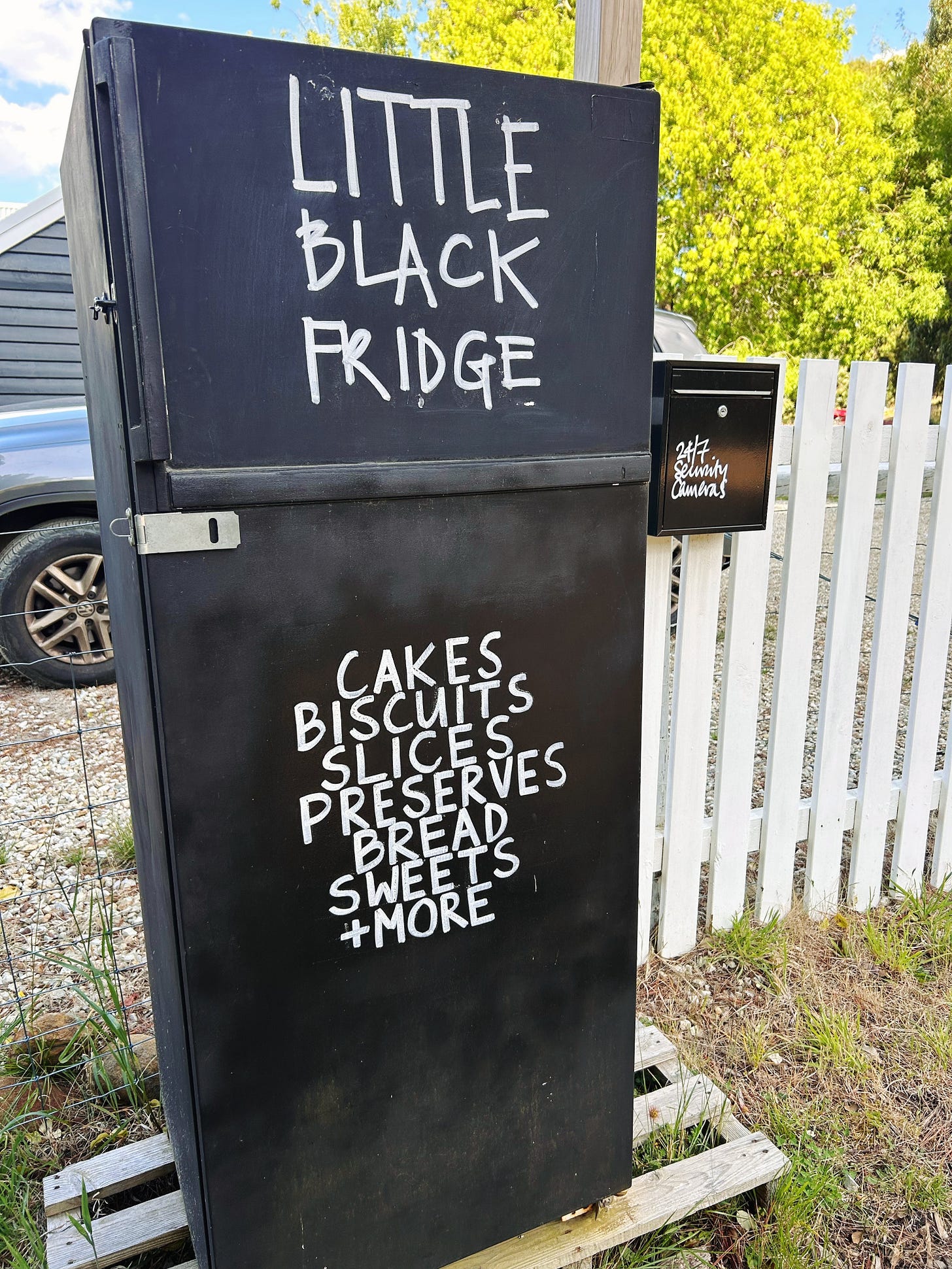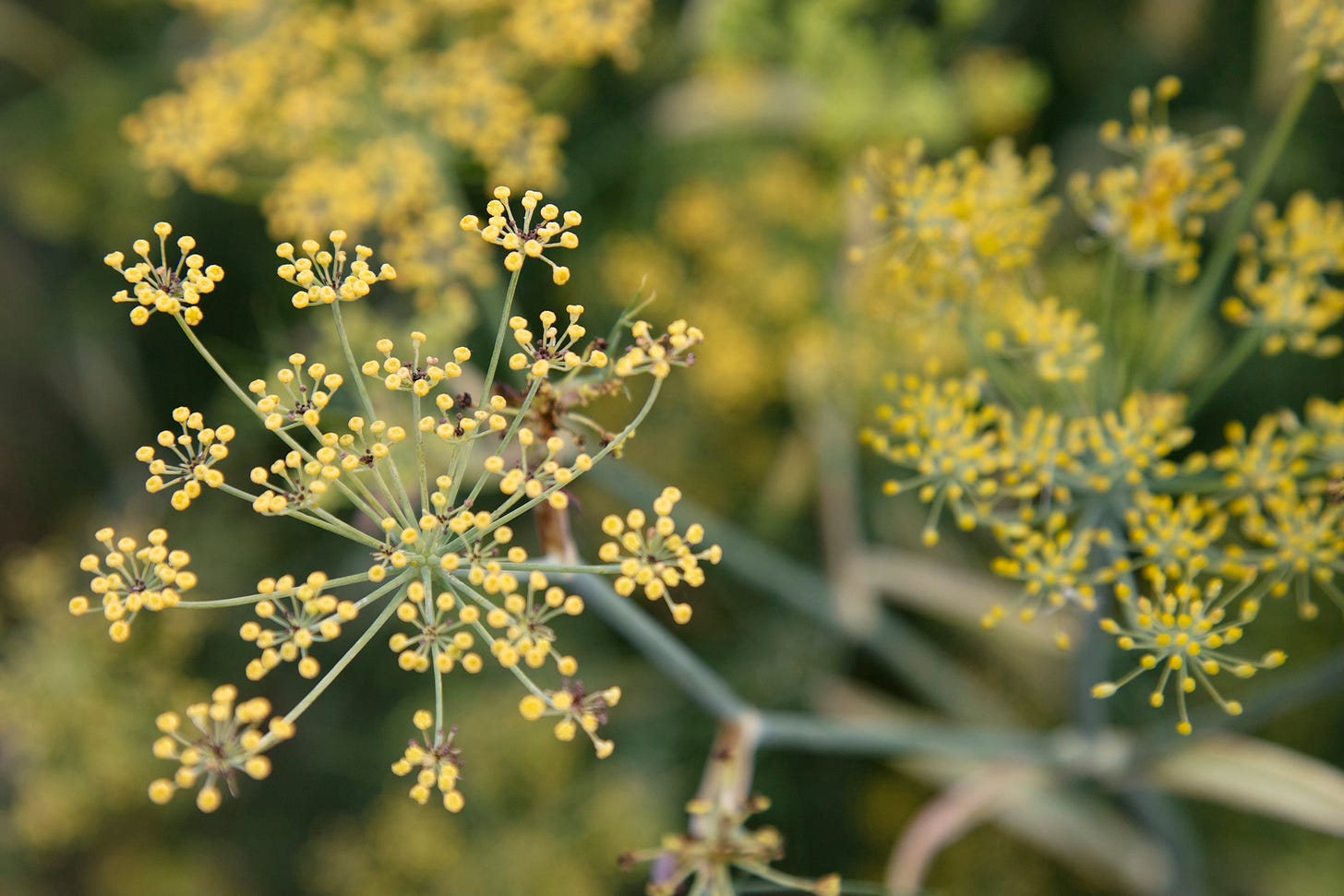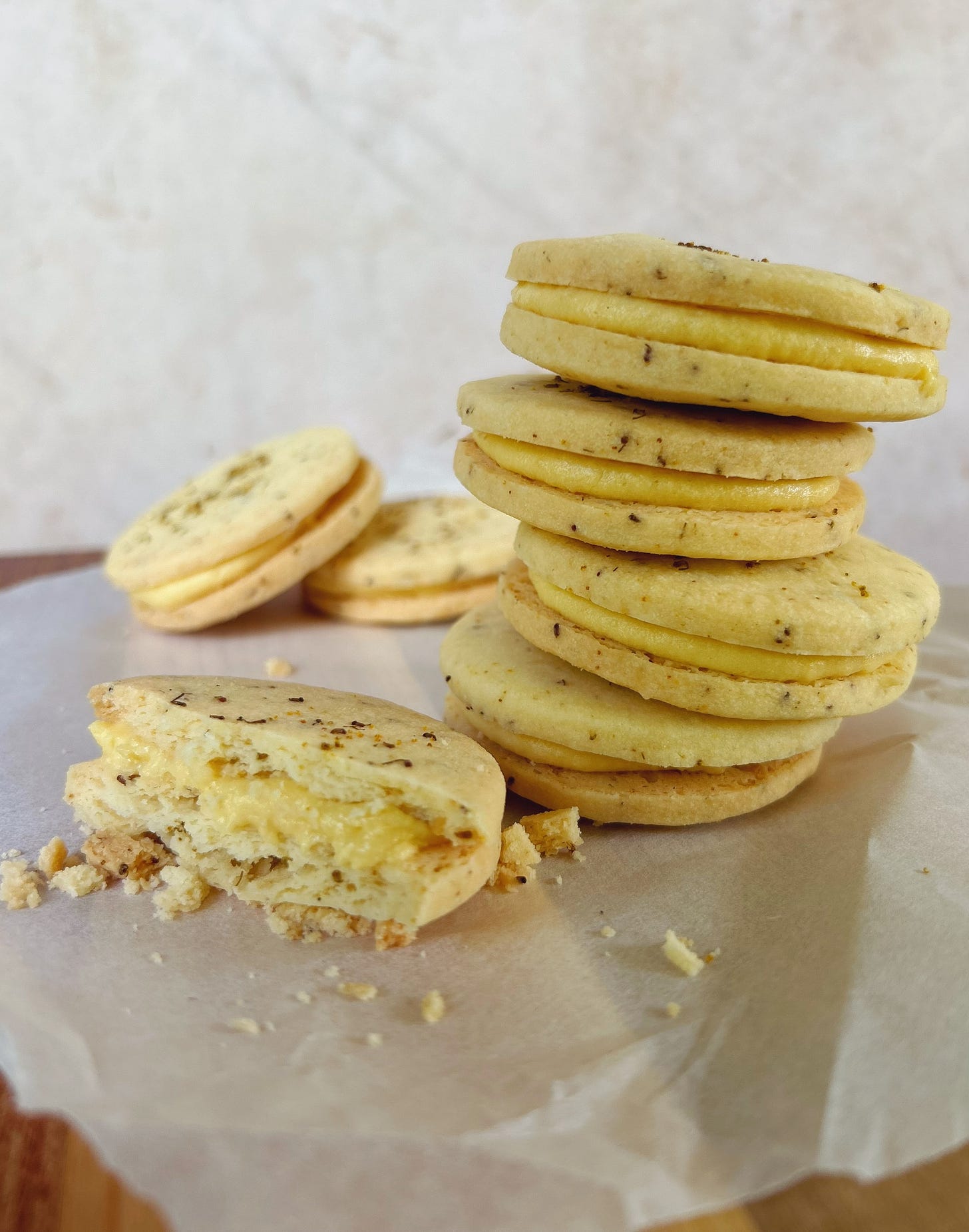the things that grow wild + wild fennel pollen shortbread and nectarine ganache
Home Baked: A Year of Seasonal Baking - Summer
Home Baked: A Year of Seasonal Baking is a cookbook in weekly instalments. A subscription will ensure you don’t miss any of the stories and recipes. Please consider supporting this publication with a paid subscription. You’ll receive printer-friendly recipe cards, bonus recipes, access to Q&A, a quarterly compilation of the recipes, plus an additional Friday newsletter.
At this time of year, I drive around with a jar of change and small notes tucked in the car’s cup holder, ready for roadside purchases. We are an area rich in roadside stalls, from the very professional, belonging to the larger orchards, to the makeshift, hastily set up table selling homegrown excess and plenty in-between. I’m not sure what it says about a location when you can do a great deal of your shopping from roadside stalls. Perhaps a lot about local ingenuity and small-scale entrepreneurial spirit. And while it’s easy to be critical of our local Council, the fact that they encourage this quirky feature of our local area is a tick in their column.
Nothing thrills me more when I spy a handmade sign alerting passing drivers to a potential bounty. I learned quickly that you need money on hand so you can stop immediately. If you have to go home, collect some money and come back, there is invariably nothing left! Increasingly the more regular roadside stalls offer direct payment, with their bank details prominently displayed. And it’s not just fruit and vegetables that you can purchase from roadside stalls, cakes, bread, preserves, eggs, flowers, apple juice, the potential is endless.
The other thing I drive around with is a pair of secateurs and a container ready to snip the freely available roadside treasures. In late spring, it’s elderflowers, and now, in mid-summer, it’s fennel and cherry plums. Soon it will be blackberries, hawthorn, rose hips and then apples.
The wild fennel is one of my very favourites. Once you notice it, you realise that it is growing wild almost everywhere. It is stands out in summer when the yellow flower umbels stand tall, swaying gently in the breeze, the feathery foliage a startling green contrast. I have a couple of favourite fennel spots where it’s easy to pull off the road. As soon as I get out of the car the low hum of the bees is evident - they love fennel flowers. I look for the flower heads that are heavy with pollen. My car is a bit of a workhorse, and I’ve long given up trying to keep it in a showroom state. These days it’s lucky if it gets an annual wash. Dirt roads, animals and produce are not conducive to a clean vehicle, so stray pollen coating the passenger seat is of no consequence.
For now, it’s the flowers I’m after and some green fronds. The flower heads and their pollen for cooking and baking, as well as adding to my vase of whimsical wildflowers, the fronds for chopping and adding to salads, light meals and zucchini in all it’s guises. In a few weeks, I’ll harvest some of the seeds. They are a distinctly different shape from the ones I buy from the shop and significantly more aniseedy.
Once home, I shake off any small insects before snipping the yellow flower heads onto a baking tray lined with baking paper and pop them in the oven on a very low heat. My oven goes down to 40°C, which is ideal for drying the flowers. They don’t take long, perhaps 30 minutes, there’s not much to them, and they aren’t particularly fleshy. After they have dried, it’s easy to crumble the pollen from the stems and store in a glass jar.
I use my fennel pollen surprisingly often. A sprinkle on some fresh green beans is wonderful, and it is a great addition to roasted root vegetables. It elevates grilled fish to a whole other level. And I love it in sweet things. These simple shortbread biscuits provide the perfect vehicle for the fennel pollen, which goes so well with the nectarine ganache filling. It’s not ganache in the truest sense in that the traditional cream is replaced with fruit purée, but was the closest I could think of as a description! For the best results, it’s important to use a ripe, well-flavoured nectarine. If you’re unable to collect your own fennel pollen, it is readily available online. Alternatively, crushed fennel seeds will also work. This makes a small batch of about 10 sandwich biscuits, but the recipe can be easily doubled. And if the ganache seems like too much bother, the shortbread are delicious on their own.
Wild fennel shortbread with nectarine ganache
Makes 10 sandwich biscuits
100 g plain flour
50 g corn flour
50 g icing sugar
1 teaspoon fennel pollen
100 g salted butter, softened and cubed
For the ganache
100 g white chocolate
50 g nectarine purée, made from 1 large nectarine, skin and stone removed and blended until smooth
extra fennel pollen for sprinkling
To make the shortbread, place the dry ingredients into the bowl of a food processor. Pulse a couple of times to mix everything together. Add the butter and whizz until a dough forms. This will take a minute or two.
Remove the dough from the food processor. Knead a couple of times to bring it all together and then shape into a flat disk. Wrap in plastic wrap and refrigerate for 30 minutes.
Preheat the oven to 160°C. Line a couple of baking trays with baking paper.
Remove the dough from the fridge. Roll out the dough between two sheets of baking paper, until about 3mm thick. These are reasonably thin, but they bake to be crunchy rather than soft. Use a 6 cm biscuit cutter to cut out rounds and place them on the baking tray. Gather up the scraps, reroll and cut more biscuits. Sprinkle a little extra fennel pollen over half of the biscuits. These will be the top of the sandwich. Bake the biscuits for 12-15 minutes until they are lightly golden around the edges.
Remove from the oven and leave to cool for five minutes before placing on a wire rack until they have completely cooled.
To make the ganache, place the white chocolate in a heat-proof bowl placed over a small saucepan of simmering water. Stir until the chocolate is melted. Add the nectarine purée and continue stirring until smooth. Pop the bowl in the fridge for 10 minutes before stirring again. Return to the fridge for a further 10 minutes before removing and giving the ganache another stir. The ganache should have firmed up enough, but it should still be spreadable.
Drop a generous teaspoonful of the ganache on a plain biscuit. Put on a top biscuit, one with the extra fennel pollen, and lightly press the two together until the ganache has spread across the surface and is visible from the side.
The biscuits are best eaten on the day they are made but will last for a few days in an airtight container but will soften over time.
Next time: making the most of the summer glut + zucchini babka
Join me, avid baker and occasional rule breaker, as I share my love of baking, adapting what we bake to suit the seasons. Your support for this project is greatly appreciated. Each weekly post is available to all subscribers.
For paid subscribers, a printer-friendly recipe card for the shortbread biscuits is below, along with other ideas for using fennel pollen and a recipe for a fennel liquor. As a paid subscriber, you receive this bonus material as well as an additional newsletter each Friday.
Keep reading with a 7-day free trial
Subscribe to Apples & Elderflower to keep reading this post and get 7 days of free access to the full post archives.








